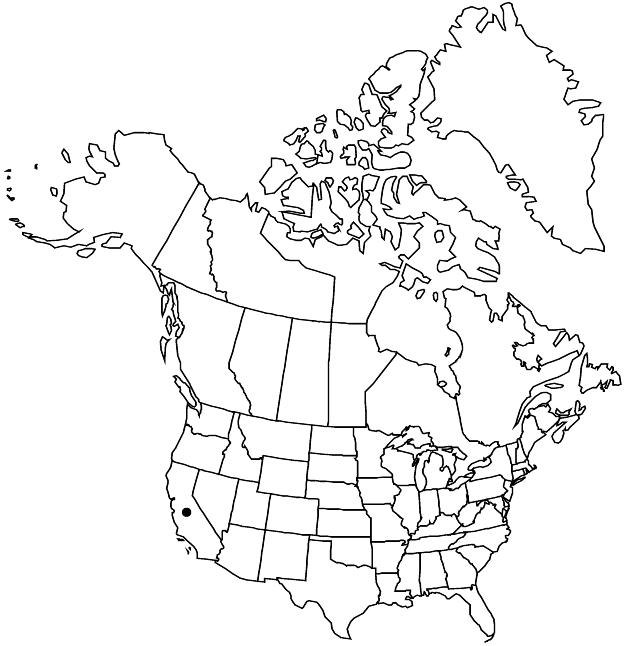Eriogonum eastwoodianum
Leafl. W. Bot. 2: 133. 1938.
Herbs, erect, 2–5 dm, tomentose, greenish gray to gray. Stems: aerial flowering-stems erect, (0.4–) 0.8–1.5 dm, tomentose. Leaves basal; petiole 2–8 cm, tomentose; blade suborbiculate, 1–3 × 1–3 cm, white-tomentose abaxially, subglabrous and greenish adaxially. Inflorescences cymose, open, 10–40 × 10–40 cm; branches tomentose; bracts 1–5 (–6) × 1–2 mm. Peduncles erect, straight, slender, 1–3.5 cm, tomentose. Involucres terminal at tips of slender branchlets at least proximally, not appressed to branches, turbinate, 2–2.5 × 1.5–2 mm, tomentose; teeth 5, erect, 0.6–0.9 mm. Flowers 1.5–2.5 (–3) mm; perianth white, glabrous; tepals monomorphic, elliptic to oblong-obovate; stamens included, 0.7–1.2 mm; filaments usually pilose proximally; styles 0.1–0.3 mm. Achenes brownish, 3-gonous, 1.6–2 (–2.5) mm; beak granular. 2n = 34.
Phenology: Flowering May–Sep.
Habitat: Sandy shale outcrops and slopes, mixed grassland communities, oak and pine woodlands
Elevation: (200-)500-1000 m
Discussion
Eriogonum eastwoodianum is rare and known only from two disjunct locations in Fresno County, one in the Silver Creek Canyon area and the other above Jacalitos Ranch on Parkfield Grade. Plants from a third site in the Cottonwood Pass area of San Luis Obispo County are now assigned to E. temblorense. That species and E. vestitum are closely related to E. eastwoodianum, and only fully mature plants can be assigned unquestionably to one of those species.
Selected References
None.
Lower Taxa
"narrowing" is not a number."dm" is not declared as a valid unit of measurement for this property."dm" is not declared as a valid unit of measurement for this property.
